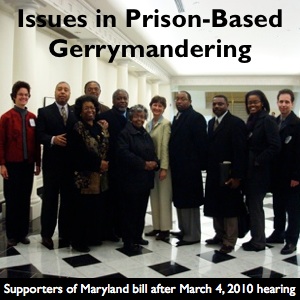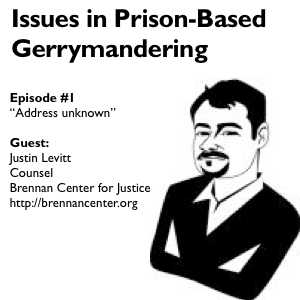Not everything is bigger in Texas: How rural Texas counties with large prisons maintain fairness in democracy
County officials do not have the luxury of crafting specious arguments in favor of prison-based gerrymandering. They have to do the right thing.
by Elena Lavarreda, June 2, 2010
Often, the biggest proponents of maintaining prison-based gerrymandering are state legislative officials with prisons in their districts. The extra population, which can’t vote, leaves fewer real constituents to be responsible to. Many times, the advantage brought by prison-based gerrymandering at the state legislative level is large enough to fight for, but not so big that one looks unreasonable to fight for it. These officials have the luxury of crafting specious arguments in defense of prison-based gerrymandering because the impact is comparatively small.
County officials, however, do not have the same luxury. Their county board districts tend to be smaller, so a single large prison could be the majority of the district. Granting some people who live near a prison more than twice the influence than others over their government simply doesn’t make sense. That’s why every county but one which has had to grapple with prison-based gerrymandering has rejected the practice, and excluded the prisoners when drawing their districts.
That said, prison-based gerrymandering still exists in many rural communities as an accident, where nobody noticed the prison was distorting democracy. For that reason, the Prison Policy Initiative has been researching how county board districts are drawn in communities that host prisons across the country.
One of the clearest examples of the import of prison-based gerrymandering is in Texas. The state has one of the highest incarceration rates in the country, and its prisons are far from the urban centers that most people in prison call home. Many of the prisons are so large, and the population in some of the rural counties so small, that the impact on state legislative districting is larger than in most other states.
But it is also in rural Texas where a consensus has developed that it doesn’t make sense to draw districts based on prison populations. In earlier research, Peter Wagner found 7 rural Texas counties who ignored the prison population when drawing their county districts.
In my work, I found an additional 7 counties that excluded the prison population when they drew their Commissioner districts. More research is ongoing, but we have yet to find a rural Texas county that has considered the question and thought it was a good idea to give some people more representation just because those people live next to a large prison.
I researched the following County Commissioner districts and saw that each ignored the prison populations when drawing their Commissioner districts, and why this solution was necessary:
- Childress County—One district in the eastern part of the county would have been 70% prisoners, giving some residents almost three times as much influence as residents elsewhere.
- Walker County—Three of the four districts contain large prisons, and one district would have been about half prisoners, giving some residents twice the influence of others.
- Anderson—A district in the western part of the county would have been entirely prisoners, with no voters.
- Karnes—A district in the south would have been 73% prisoners.
- Pecos—One district in the west would have been 32% prisoners.
- Mitchell—A district in the northwest would have been entirely prisoners.
- Coryell—A district in the central part of the county would have been 47% prisoners.
These 7 counties, like the 7 counties Peter discovered in April, all reject the Census Bureau’s prison counts and draw fair districts based on the actual population of their counties.
Prisons are an important phenomenon in Texas. In his new book, Texas Tough, Robert Perkinson shows that Texas leads the nation by most measures of criminal justice severity — total prison population, total supermax cells, and total executions.
But when it comes to the harm to democracy caused by prison-based gerrymandering, these rural Texas counties have shown that not everything is bigger in Texas.
With state legislative redistricting right around the corner, I hope that state leaders will follow the ethical example set by their county-level counterparts.
 Play (13:02, 6.6MB)
Play (13:02, 6.6MB) Play (20:37, 10.8MB)
Play (20:37, 10.8MB)


